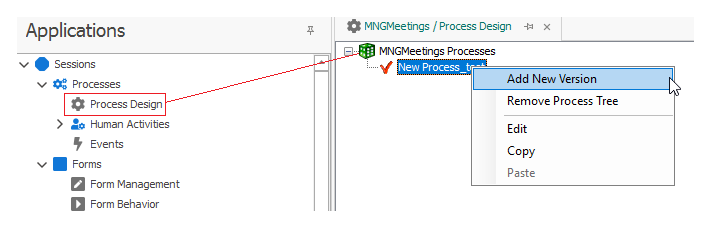A “Process” is a set of interconnected work activities that work together produce a result.
Designing a process using the advanced environment
To design the process using the advanced environment, follow the steps below:
- Select the “Process Design” sub-category from the Open Application Tree, and then right-click on the “[YourAppName] Processes” and select the “Add Process” option.

- The process edit form will be displayed to allow the user to enter the process specifications.

Type: Any process in an organization can be defined in three ways: human, state machine, and simple. The toolbox features will vary according to each type (See 6.1.1.2).
- Human process is a type of process in which the important roles in its execution are individuals/Users and can be used as tools such as human activities, system activity, public activity, subprocess, general aggregation, sum.
- State machine: entities have two types of attributes: attributes with a dynamic nature and static nature. Dynamic attributes changes based on the circumstances and events of that entity. In this system, dynamic attributes can be implemented as “state machine”.
Name: The unique name for the process.
Ttile: The Title for the Process
Entity: Each process is associated to an entity.
Start Manually: If you do not select this option, by creating an instance of the entity, all the processes defined for that entity are executed, and if this option is selected, the process will only be executed by calling the code. Process callback API (See Section 12)
Specification: Detailed descriptions of process and rules related to the process.
- Right click on the title of the defined process and then select “Add New Version”(See 6.1.2)


- Double click on the title of the generated version



